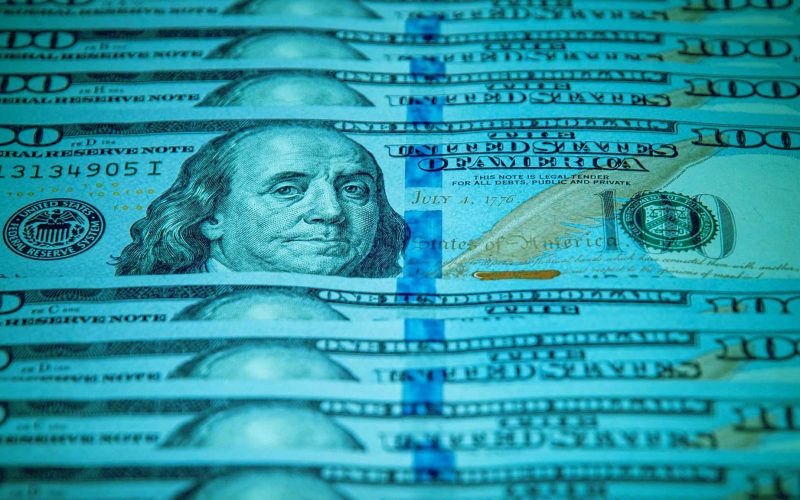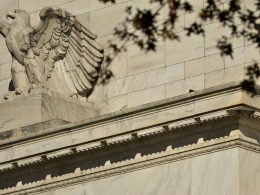by Brian Wesbury, Chief Economist, & Robert Stein, Deputy Chief Economist, First Trust Portfolios
A key economic mistake people make is thinking growth leads inflation. One reason they do that is because inflation is a monetary phenomenon. When money is too easy, first growth rises, and then inflation rises with a longer lag due to excess dollars in the system. This process reverses when money is tight, first growth slows, then with a longer lag inflation does too.
That makes 2023 an anomaly. The economy has remained resilient, but year-over-year consumer price inflation has moderated from a peak of 9.1% in mid-2022 to 3.4% in December 2023.
One theory is that the high inflation was all due to economic bottlenecks and supply constraints during COVID, so the end of lockdowns and the process of getting back to normal has expanded supply, leading to both faster growth and lower inflation. There’s no doubt that the imposition of lockdowns and then the re-opening from those lockdowns had “supply-side” effects – first negative, then positive – and are consistent with this explanation.
But it’s a flawed explanation. If supply constraints and their loosening were the key drivers of inflation, we would expect pandemic driven inflation to be followed by outright deflation as the economy reopened and returned to normal. That clearly hasn’t happened, and inflation remains stubbornly high.
Instead, we believe monetary policy played the key role. The M2 measure of the money supply soared 41% in 2020-21, the fastest since World War II. This measure of the money supply then declined 3.2% in 2022-23, the largest two-year drop since the Great Depression. These swings in M2, the relative sizes of the swings (larger up than down), and the long lags between shifts in M2 and inflation do a much better job explaining the inflation pattern of the past few years.
The problem with this theory of “monetary dominance” is that classical liberals like Milton Friedman and the Austrians would expect economic growth to take a hit before inflation were brought back down to normal. And yet Real GDP grew 3.1% in 2023, which is above the 2.0% long-term trend.
So what gives? Our belief is that the US injected so much money, so rapidly, that the economy couldn’t absorb it instantaneously. So, now, what we have seen is that even though M2 has declined, we still haven’t absorbed all the money that was added. Some call it excess savings, we call it excess M2.
But the US has finally absorbed the excess money, and fiscal stimulus is waning as well. And guess what? Recent reports for January show an economy that may be weakening faster than most investors realize. Retail sales fell 0.8% for the month and have declined in three of the past four months. Manufacturing production fell 0.5% in January and manufacturing excluding the auto sector (the auto sector is volatile) has declined four months in a row.
Meanwhile, home building got hammered in January, with both housing starts (-14.8%) and completions (-8.1%) dropping sharply. It’s possible that colder than normal January temperatures were a factor, as well as unusually high precipitation, but the drop in starts was in every major region of the country, the drop in completions happened in most regions (except for the West), and while weather was bad, quantitative measures of national heating requirements were not unusually high in January.
We’ve had bad weather before – and apocalyptic weather reports are clearly clickbait for some in the news media – but housing starts in January were the second lowest for any month since mid-2020, during the onset of COVID when lockdowns still prevailed in much of the country. In other words, we see these data potentially signaling broader economic weakness, consistent with the drop in retail sales and decline in manufacturing production in January.
And yet inflation was also a problem in January, with both consumer and producer prices rising 0.3%, faster than the consensus expected and inconsistent with the Federal Reserve’s 2.0% target inflation.
A weakening US economy with inflation remaining (temporarily) stubbornly high would be consistent with the monetary dominance story of inflation’s rise and fall and would also be a problem for the stock market. Using our Capitalized Profits Model, with a 10-year Treasury yield at about 4.25%, economy-wide corporate profits would need to rise 30%+ to justify an S&P 500 at 5,000. But there’s no way profits (ex-Fed), which are already high relative to GDP would surge that much higher in a soft economy. The current consensus puts profit growth at roughly 10% this year.
Time will tell if the weakness in January becomes more widespread. On the surface, the job market still looks fine, with payrolls up more than 300,000 in both December and January. But the labor market can be a lagging indicator.
Unprecedented policies during COVID have created noise in the data. But underneath it all, we still believe Milton Friedman had it right. A decline in money will lead to recession, and then a decline in inflation.
Brian S. Wesbury – Chief Economist
Robert Stein, CFA – Deputy Chief Economist
Click here for a PDF version
Copyright © First Trust Portfolios














